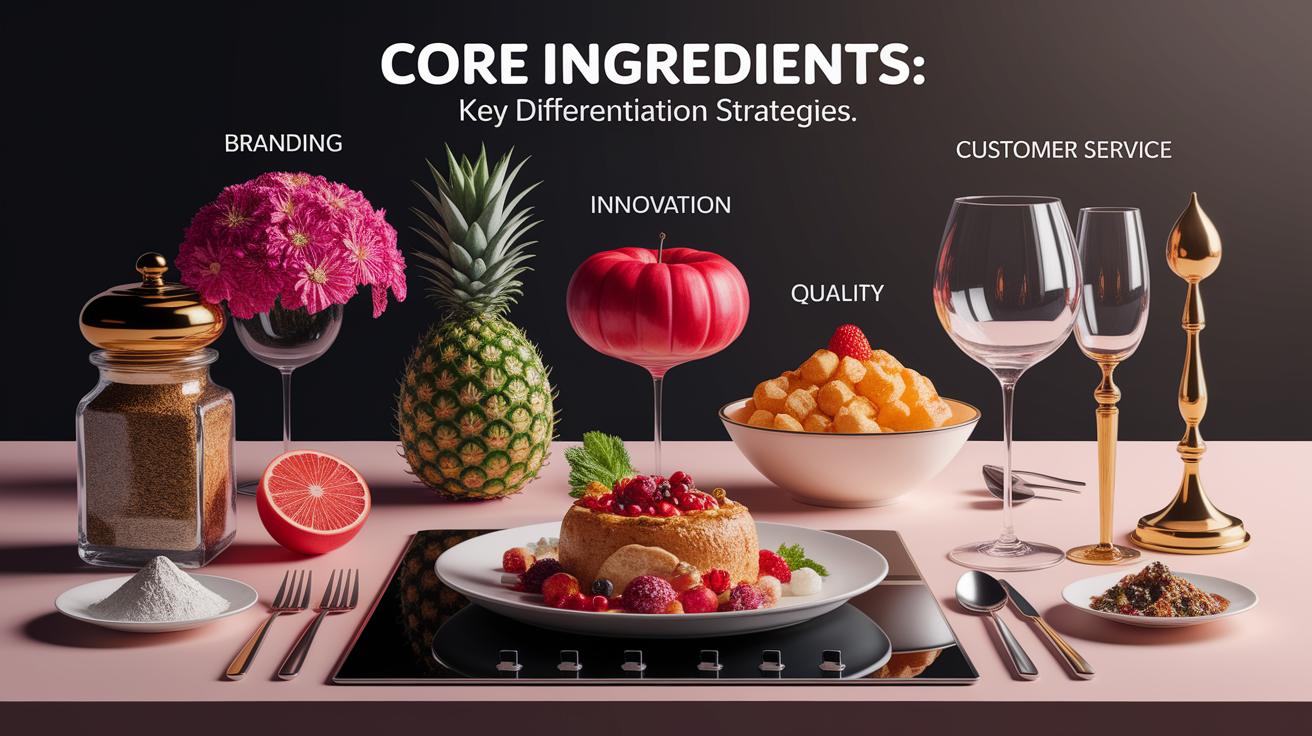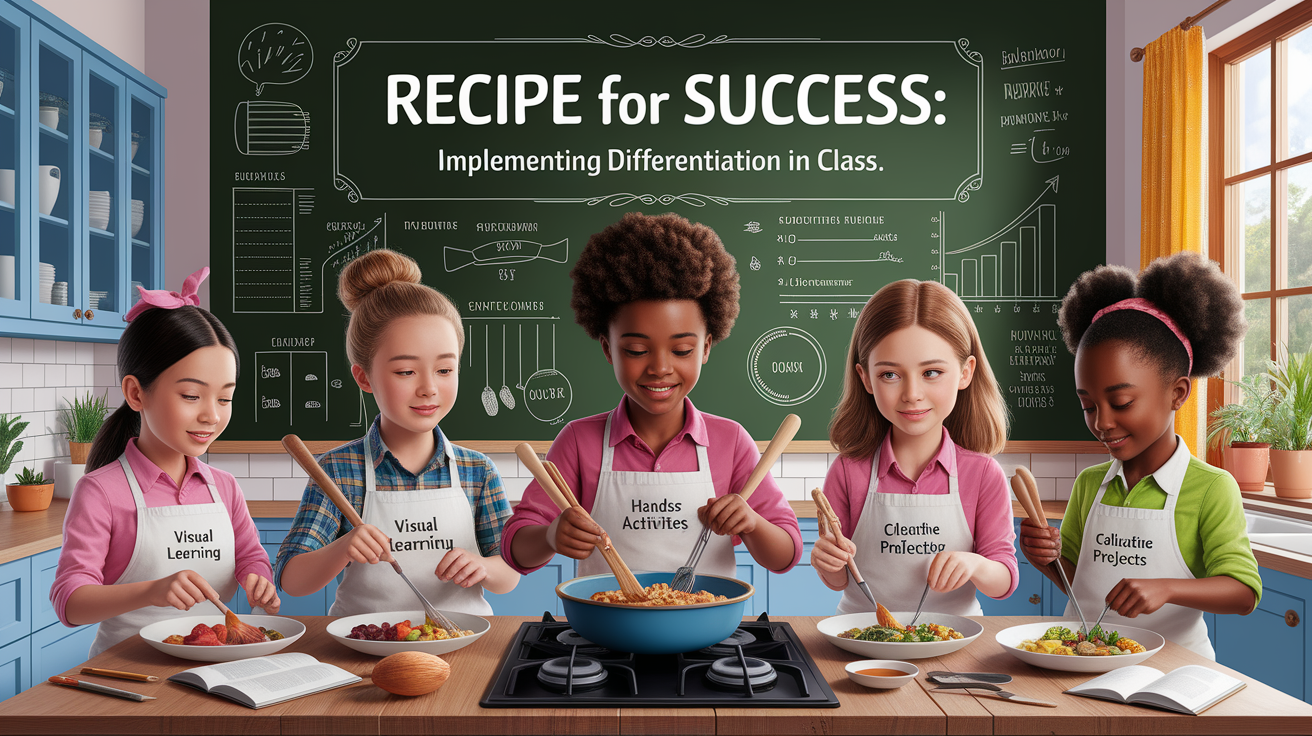Picture your classroom: a vibrant, buzzing ecosystem of learners. Over here, a student finishes the assignment in five minutes flat and is already asking “What’s next?” In the back, another student is still puzzling over the first question, feeling overwhelmed. Meanwhile, a few others are right on track, but could be pushed to think just a little deeper. If this sounds familiar, you’re not alone. The big question on every teacher’s mind is: how do you reach every single one of them? The answer lies in mastering a few practical, powerful differentiated instruction strategies that can transform your classroom and unlock every student’s potential.
First Slice: Unlocking Differentiated Instruction
Let’s clear the air. Differentiated instruction is not about creating 30 unique, individual lesson plans every single night. That’s a one-way ticket to burnout! Instead, think of it as a mindset—a proactive approach to planning that anticipates and honors the variety of learning needs in your room. It’s about being flexible and responsive, making intentional tweaks to your teaching so every student has a pathway to success.

Differentiation is about being thoughtfully different, not just different for difference’s sake. It’s a targeted response to student needs.
At its heart, differentiation is an issue of equity. It’s the belief that every student deserves to be challenged, engaged, and supported. When you differentiate, you move away from a “one-size-fits-all” model and instead create a learning environment where everyone can thrive. It is not a program or a package deal; it is a way of thinking about teaching and learning.
Core Ingredients: Key Differentiation Strategies
So, how do you actually do it? Most differentiated instruction strategies fall into four key categories. You can mix and match these “ingredients” to create the perfect recipe for your students. Think of these as the main dials you can turn up or down in your classroom.
Content: What Students Learn
This is all about the “what”—the information and skills you want your students to master. Differentiating the content doesn’t mean changing the learning goals, but rather changing how students access the material.
- Tiered Readings: Provide texts on the same topic at different reading levels.
- Varied Media: Supplement a core text with videos, podcasts, or infographics that convey the same key concepts.
- Learning Contracts: Allow students to work at their own pace through a set of required tasks, with options for “going further” for those who are ready.
Process: How Students Learn
Process is the “how.” It’s the activity or practice students engage in to make sense of the content. This is often the easiest and most effective place to start differentiating.

- Flexible Grouping: This is a game-changer! Group students in various ways for different tasks—sometimes by interest, sometimes by readiness, and sometimes randomly. Use pairs, small groups, and individual work throughout a single lesson.
- Learning Menus or Choice Boards: Give students a menu of tasks that all lead to the same learning objective. They might have to complete a few “main dishes” and pick one or two “side dishes.”
- Hands-On Activities: Offer manipulatives, experiments, or role-playing scenarios as an alternative to a traditional worksheet.
Product: How Students Show What They Know
Product refers to the end result—the way students demonstrate their understanding. Offering choice here allows students to leverage their unique strengths and talents.
- Tiered Assessments: Create versions of a test or project that are more or less scaffolded, but assess the same core standards.
- Varied Formats: Instead of only a written report, allow students to create a podcast, design a presentation, write and perform a skit, or build a physical model.
- RAFT Assignments: Ask students to write or create from a specific perspective by defining the Role, Audience, Format, and Topic.
Learning Environment: Where Students Learn
The learning environment is the classroom’s culture and physical setup. A differentiated classroom feels safe, respectful, and supportive of every learner.
- Flexible Seating: Provide different seating options like wobble stools, floor cushions, or standing desks to meet physical and sensory needs.
- Quiet Zones vs. Collaboration Stations: Designate areas in the room for different types of work.
- Clear Routines: Establish clear procedures so students know how to work independently, transition between groups, and access materials without constant teacher direction.
Recipe for Success: Implementing Differentiation in Class
Knowing the ingredients is one thing; cooking the meal is another. Getting started doesn’t have to be overwhelming. The key is to begin with small, manageable steps. First and foremost, get to know your learners on a deeper level. Use entry tickets, quick surveys, and simple observation to understand their interests, strengths, and areas for growth. This information is the foundation for all your differentiation decisions.

Next, choose one thing to try. Don’t attempt to differentiate content, process, and product all in one lesson on day one. Pick one subject area and one strategy. Maybe you’ll offer a choice board for your next history unit or try out flexible grouping during your math block. By starting small, you can refine your approach, build your confidence, and see the positive impact on your students, which will motivate you to continue.
Taste Test: Monitoring and Adjusting Your Approach
Differentiation is a dynamic, ongoing cycle, not a static plan. How do you know if your strategies are working? The answer is constant, informal assessment. This isn’t about more grading; it’s about more listening and observing.

Use simple tools to take the temperature of your classroom:
- Exit Tickets: Ask a single question at the end of class to see who “got it” and who needs more support.
- Think-Pair-Share: Listen in on student conversations to gauge understanding.
- Student Self-Reflection: Ask students to rate their own confidence with a concept on a scale of 1-4.
This data helps you make informed decisions on the fly. You can adjust your small groups for the next day, pull a few students for a quick reteach session, or provide an extension activity for those who are ready to move on. When you use this feedback loop, your instruction becomes incredibly precise and powerful.
Last Bite: Keeping Differentiation Fresh
Even the best recipes can get a little stale over time. To keep your differentiation efforts vibrant and effective, it’s important to stay inspired. Lean on your colleagues. Share what’s working in your classroom and ask what’s working in theirs. A five-minute chat in the hallway can yield a brilliant new idea.
Don’t be afraid to embrace technology. Digital tools can make differentiation more manageable. Adaptive software can provide personalized practice, while platforms like Google Slides can make creating and sharing choice boards a breeze. Finally, always circle back to your “why.” On the tough days, remember the student whose face lit up when they finally understood a concept, or the one who discovered a hidden talent through a creative project. That is the magic of differentiation.
By thoughtfully mixing and matching these strategies, you create a classroom that celebrates diversity and empowers every single child. You are not just teaching a curriculum; you are teaching students, and that makes all the difference.
Key Takeaways
- Think Strategic, Not More: Differentiation is about making smarter, more targeted instructional choices, not simply creating more work for yourself.
- Focus on the Four Pillars: You can differentiate the Content (what they learn), Process (how they learn), Product (how they show it), and Learning Environment.
- Start Small, Win Big: Implement one new strategy at a time, like a choice board or flexible grouping, to build your confidence and see immediate results.
- Assess to Progress: Use quick, informal assessments like exit tickets and observation to gather real-time data and adjust your instruction accordingly.
- Flexible Grouping is a Superpower: Group and regroup students based on readiness, interest, or task to keep learning dynamic and targeted.
- Empower Your Students: Give students choice and ask for their feedback. Involving them in their own learning journey fosters ownership and motivation.




